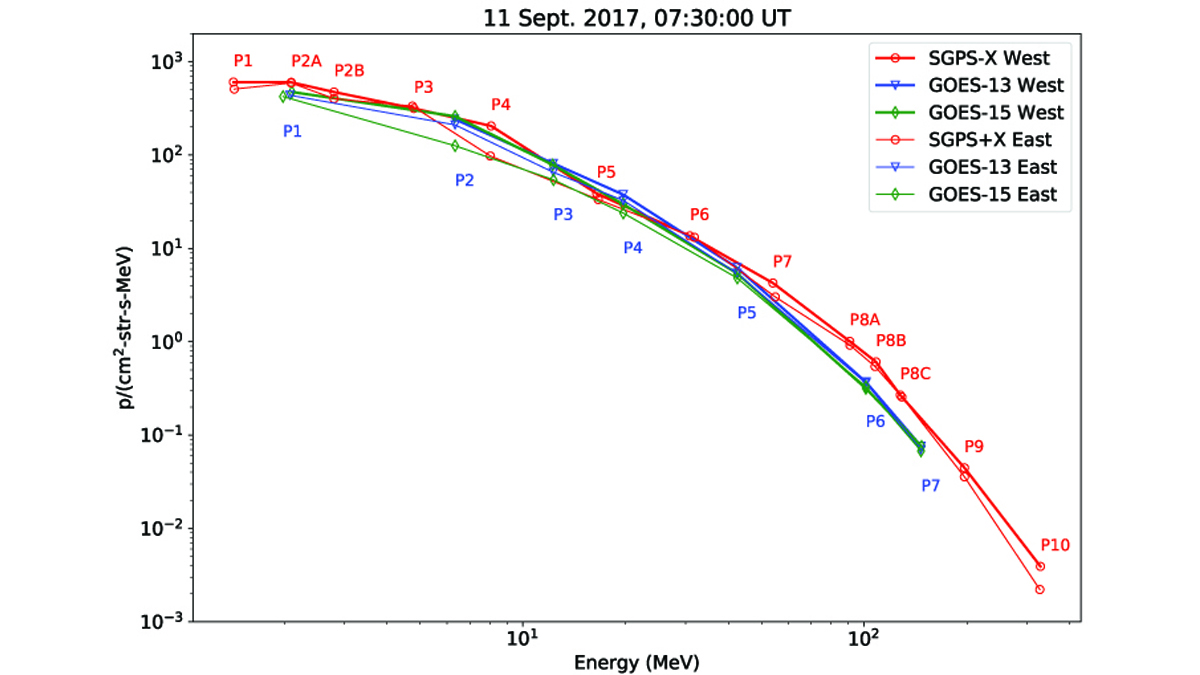Editors’ Highlights are summaries of recent papers by AGU’s journal editors.
Source: Space Weather
Solar energetic particle events, where energetic protons erupting from the Sun reach near-Earth space, are a hazard for both satellites and astronauts. NOAA’s newest series of weather satellites has updated space weather sensors to provide improved monitoring of this hazard. A series of solar energetic particle events in September 2017 provided an opportunity to cross-compare the measurements with instruments from previous generations. Kress et al. [2021] introduce the new data set, showcase the improved capabilities for operations and scientific discovery, and enable exceptionally long baseline measurements for understanding long term trends in solar eruptions.
Citation: Kress, B. T., Rodriguez, J. V., Boudouridis, A., Onsager, T. G., Dichter, B. K., Galica, G. E., & Tsui, S. [2021]. Observations from NOAA’s newest solar proton sensor. Space Weather, 19, e2021SW002750. https://doi.org/10.1029/2021SW002750
—Steven K. Morley, Editor, Space Weather

